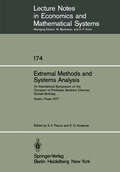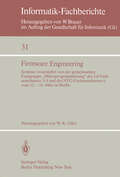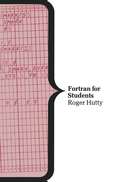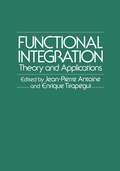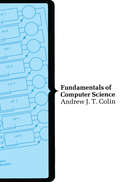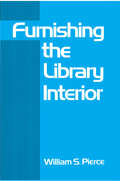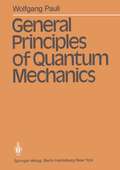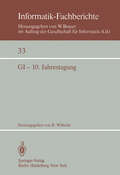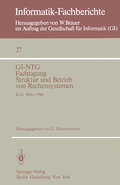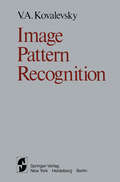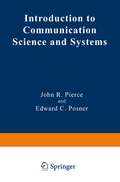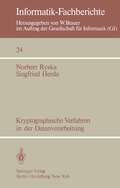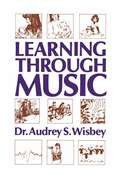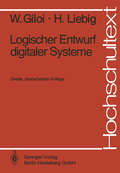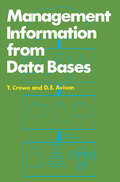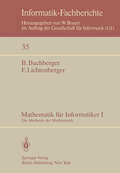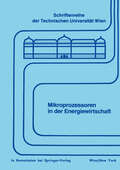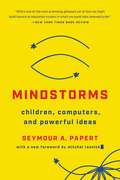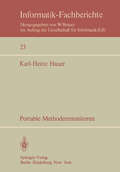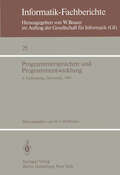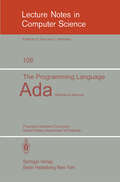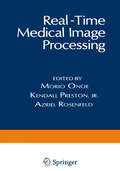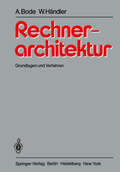- Table View
- List View
Extremal Methods and Systems Analysis: An International Symposium on the Occasion of Professor Abraham Charnes’ Sixtieth Birthday Austin, Texas, September 13 – 15, 1977 (Lecture Notes in Economics and Mathematical Systems #174)
by A. V. Fiacco K. O. KortanekThe papers appearing in this Volume were selected from a collec tion of papers presented at the Internationa~ Symposium on Extrema~ Methods and Systems Ana~ysis on the Occasion of Professor A. Charnes' 60th Birthday, at the University of Texas in Austin, 13-15 September 1977. As coeditors, we have followed the normal editorial procedures of scholarly journals. We have obtained invaluable assistance from a number of colleagues who essentially performed the duties of associate editors, coordinating most of the reviews. All papers except those appearing in the Historica~ Perspectives section were refereed by at least two individuals with competency in the respective area. Because of the wide range and diversity of the topics, it would have been im possible for us to make a consistently rational selection of papers without the help of the associate editors and referees. We are indeed grateful to them. The breadth of extremal methods and systems analysis, suggested by the range of topics covered in these papers, is characteristic of the field and also of the scholarly work of Professor Charnes. Extre mal methods and systems analysis has been a pioneering and systematic approach to the development and application of new scientific theories and methods for problems of management and operations in both the pri vate and public sectors, spanning all major disciplines from economics to engineering.
Firmware Engineering: Seminar veranstaltet von der gemeinsamen Fachgrupe „Mikroprogrammierung“ des GI Fachausschusses 3/4 und des NTG-Fachausschusses 6 vom 12. – 14. März 1980 in Berlin (Informatik-Fachberichte #31)
by W. K. GiloiFunctional Integration: Theory and Applications
by Jean-Pierre Antoine Enrique TirapeguiThe idea of the workshop on Functional Integration, Theory and Applications, held in Louvain-Ia-Neuve from November 6 to 9 1979, was to put in close and informal contact, during a few days, active workers in the field. There is no doubt now that functional integration is a tool that is being applied in all branches of modern physics. Since the earlier works of Dirac and Feynman enormous progress has been made, but unfortunately we lack still a unifying and rigo rous mathematical framework to account for all the situations in which one is interested. We are then in presence of a rapid ly changing field in which new achievements, proposals, and points of view are the normal pattern. Considering this state of affairs we have decided to order the articles starting from the more fundamental and ambitious from the point of view of mathematical rigour, followed by ar ticles in which the main interest is the application to con crete physical situations. It is obvious that this ordering should not be taken too seriously since in many cases there will be an interplay of both objects.
Furnishing the Library Interior
by William S PierceThis book discusses the selection, evaluation, and purchase of furniture and equipment for libraries. It examines the arrangement of the interior to update and illuminate earlier writings, and helps those spending even small amounts for library furniture and equipment to do so more wisely.
Furnishing the Library Interior
by William S PierceThis book discusses the selection, evaluation, and purchase of furniture and equipment for libraries. It examines the arrangement of the interior to update and illuminate earlier writings, and helps those spending even small amounts for library furniture and equipment to do so more wisely.
General Principles of Quantum Mechanics
by Wolfgang PauliI am very happy to accept the translators' invitation to write a few lines of introduction to this book. Of course, there is little need to explain the author. Pauli's first famous work, his article on the theory of relativity in the Encyklopädie der Mathematischen Wissenschaften was written at the age of twenty. He afterwards took part in the development of atomic physics from the still essentially classical picture of Bohr's early work to the true quantum mechanics. Thereafter, some of his work concerned the treatment of problems in the framework of the new theory, especially his paper on the hydrogen atom following the matrix method without recourse to Schrodinger's analytic form of the theory. His greatest achievement, the exclusion principle, generally known today under his own name as the Pauli principle, that governs the quantum theory of all problems including more than one electron, preceded the basic work of Heisenberg and Schrodinger, and brought him the Nobel prize. It includes the mathematical treatment of the spin by means of the now so well known Pauli matrices. In 1929, in a paper with Heisenberg, he laid the foundation of quantum electrodynamics and, in doing so, to the whole theory of quantized wave fields which was to become the via regia of access to elementary particle physics, since here for the first time processes of generation and annihilation of particles could be described for the case of the photons.
GI — 10. Jahrestagung: Saarbrücken, 30. September – 2. Oktober 1980 (Informatik-Fachberichte #33)
by R. WilhelmGI-NTG Fachtagung Struktur und Betrieb von Rechensystemen: Kiel, 19.–21. März 1980 (Informatik-Fachberichte #27)
by G. ZimmermannImage Pattern Recognition
by V.A. KovalevskyDuring the last twenty years the problem of pattern recognition (specifically, image recognition) has been studied intensively by many investigators, yet it is far from being solved. The number of publications increases yearly, but all the experimental results-with the possible exception of some dealing with recognition of printed characters-report a probability of error significantly higher than that reported for the same images by humans. It is widely agreed that ideally the recognition problem could be thought of as a problem in testing statistical hypotheses. However, in most applications the immediate use of even the simplest statistical device runs head on into grave computational difficulties, which cannot be eliminated by recourse to general theory. We must accept the fact that it is impossible to build a universal machine which can learn an arbitrary classification of multidimensional signals. Therefore the solution of the recognition problem must be based on a priori postulates (concerning the sets of signals to be recognized) that will narrow the set of possible classifications, i.e., the set of decision functions. This notion can be taken as the methodological basis for the approach adopted in this book.
Introduction to Communication Science and Systems (Applications of Communications Theory)
by John R. Pierce Edward C. PosnerThere are many valuable and useful books on electrical communication (References 1-5 are some examples), but they have certain disadvantages for the beginner. The more advanced books present some things in a basic way, but they are very narrow for an introduction to communica tion. The introductory books are broader but still narrow by our stan dards. Further, they often pick things out of thin air rather than derive them. This book is aimed at giving the beginner a basic understanding of a wide range of topics which are essential in communication systems. These include antennas and transmission, thermal noise and its consequences, Fourier transforms, modulation and noise, sampling and pulse code modulation, autocorrelation and power spectrum, optimum filtering, gauss ian noise and errors in digital transmission, data transmission, limits on data rate including information theory and quantum limits, and source encoding. We have not included communications traffic, switching, and multiplexing, nor protocols for digital and computer communications. For these, Reference 6 is excellent. In general, our book does not discuss the circuits used for communication or the physics of radio propagation. We assume that these will be taught in specialized courses, but such courses are not prerequisites for this one. Chapter 1 introduces the transmission formula or antenna equation and antenna directivity. Only a very basic sophomore physics knowledge of electromagnetic theory is assumed. The radar equation is also treated.
Kryptographische Verfahren in der Datenverarbeitung (Informatik-Fachberichte #24)
by Norbert Ryska Siegfried HerdaLogischer Entwurf digitaler Systeme (Hochschultext)
by Wolfgang Giloi Hans LiebigBücher über die Arbeitsweise und den Entwurf logischer oder digitaler Systeme weisen unserer Meinung nach häufig einen Schönheitsfehler auf (manche mehr, manche weniger): sie trennen zu wenig die Betrachtung des funktionellen Ver haltens solcher Systeme von der Betrachtung ihres tee h n i sc he n Verhaltens. Das Standardbuch über Digitaltechnik enthält in der Regel die Definition einer Schalt algebra sowie Methoden der Beschreibung und Minimierung von Schaltnetzen und Schaltwerken, aber zum Beispiel auch die Darlegung der Arbeitsweise von Dioden und Transistoren als logische Verknüpfungselemente, den Aufbau und die Arbeitsweise von Ferritkern-Speichern, und wenn es modern ist, wird es auch die schaltungs mäßige Realisierung von integrierten Verknüpfungselementen behandeln. Wir wollen hierdurch keineswegs ausdrücken, daß die Fragen des technischen Auf baus von logischen Systemen nicht sehr wichtig sind und einer theoretischen Durch dringung wie einer Anleitung zum praktischen Handeln bedürfen. Diese Fragen je doch zum Bestandteil eines Lehrbuchs zu machen, birgt bei dem atemberaubenden Tempo der technischen Entwicklung ständig die Gefahr in sich, daß ihre Darstellung bereits in dem Augenblick veraltet ist, in dem das Buch im Druck erscheint. Die aktuellsten Informationen auf diesem Gebiet sind zwangsläufig die Handbücher der Schal tkrei s -Hersteller.
Mathematik für Informatiker I: Die Methode der Mathematik (Informatik-Fachberichte #35)
by B. Buchberger F. LichtenbergerMikroprozessoren in der Energiewirtschaft (Schriftenreihe der Technischen Universität Wien #13)
by L. BauerMindstorms: Children, Computers, And Powerful Ideas
by Seymour A. PapertIn this revolutionary book, a renowned computer scientist explains the importance of teaching children the basics of computing and how it can prepare them to succeed in the ever-evolving tech world.Computers have completely changed the way we teach children. We have Mindstorms to thank for that. In this book, pioneering computer scientist Seymour Papert uses the invention of LOGO, the first child-friendly programming language, to make the case for the value of teaching children with computers. Papert argues that children are more than capable of mastering computers, and that teaching computational processes like de-bugging in the classroom can change the way we learn everything else. He also shows that schools saturated with technology can actually improve socialization and interaction among students and between students and teachers.Technology changes every day, but the basic ways that computers can help us learn remain. For thousands of teachers and parents who have sought creative ways to help children learn with computers, Mindstorms is their bible.
Peroxisomes and Related Particles in Animal Tissues (Cell Biology Monographs #7)
by P. Böck R. Kramar M. PavelkaIn modern scientific investigation the fields of biochemistry, molecular biology, and morphology comprise an indivisible area of study. The present book results from the cooperation of a bioehernist and morphologists: the revision and unified treatment of available data is the primary object of our work. A comprehensive review of all the available literature is therefore beyond the scope of this volume. lt is intended to be a manual to be used in the laboratory, with convenient guidelines for practical work. Plant microbodies have been treated by B. GERHARDT in Volume 5 of this series. The discovery of fatty acid ß-oxidation in animal peroxisomes has proved once more that plant and animal microbodies are members of the same family of organelles. lt provided new insights into the physiological meaning of these particles; our understanding of these "classical" cell organelies is undergoing continual alteration and development. PETER BöcK Vienna, July 1980 ROBERT KRAMAR MARGIT PAVELKA Acknowledgements We wish to express our gratitude to Prof. Dr. D. H. FAHIMI and Dr. P. KALMBACH (Heidelberg) for kindly providing Figure 14, to Prof. Dr. KARIN GoRGAS (Heidelberg) for allowing the reproduction of Figure 43, to Profs. Dr. L. STOCKINGER and Dr. E. KAISER for helpful criticism, and to all our colleagues in our respective institutes. W e are especially grateful to Drs. H. GoLDENBERG and M. HüTTINGER for continuous discussion, to Mrs. JuTTA SELBMANN for typing the references, and to Mr. P. KAMPFER and Mr. H. WAGNER for carefully drawing some of the figures.
Portable Methodenmonitoren: Dialogsysteme zur Steuerung von Methodenbanken: softwaretechnischer Aufbau und Effizienzanalyse (Informatik-Fachberichte #23)
by K.-H. HauerProgrammiersprachen und Programmentwicklung: 6. Fachtagung des Fachausschusses Programmiersprachen der GI, Darmstadt, 11.–12. März 1980 (Informatik-Fachberichte #25)
by H. J. HoffmannDie Fachtagungen, die der Fachausschuß 2 PROGRAMMIERSPRACH~N der Gesellschaft für Informatik*) seit 1971 regelmäßig, nunmehr zum sechsten Mal, veranstaltet und in Ta gungsbänden dokumentiert, geben Zeugnis von dem jeweiligen Selbst-Verständnis des Faches PROGRAMMIERSPRACHEN, zumindest aus der Sicht einiger seiner Repräsentanten und der Vortragenden. Die 6. Fachtagung, die am 11. und 12. März 1980 in Darmstadt stattfindet, spielt darin sicherlich keine Sonderrolle. Es wurde diesmal eine breitere Thematik gewählt, wie es aus der Tagungsbezeichnung hervorgeht, nämlich PROGRAMMIERSPRACHEN UND PROGRAMMENTWICKLUNG. Jedenfalls wird damit zum Ausdruck gebracht, daß Programmiersprachen nicht nur eine Zielsetzung in sich haben, d.h. einem Selbstzweck unterworfen sind, sondern zu einem weiteren Zweck, der Programmentwicklung, in Beziehung treten, in Beziehung treten müssen. Dieses verbreiterte Selbst-Verständnis hat sich - bedauerlicherweise - im Tagungsprogramm und als Folge davon im Tagungsband nicht übermäßig deutlich ausge wirkt. Die Veranstalter legen allerdings zum Zeitpunkt der Drucklegung die (berech tigte) Hoffnung, daß in der vorgesehenen Diskussion über "Software Engineering - Programmiersprachen, Programmentwicklung -" zu der breiteren Thematik einige beach tenswerte Aussagen kommen. Im Tagungsband, der den Tagungsteilnehmern zu Beginn der Tagung ausgehändigt wird, läßt sich eine solche Diskussion noch nicht einfangen; ihre Auswirkungen zeigen sich, hoffentlich, an anderer Stelle.
